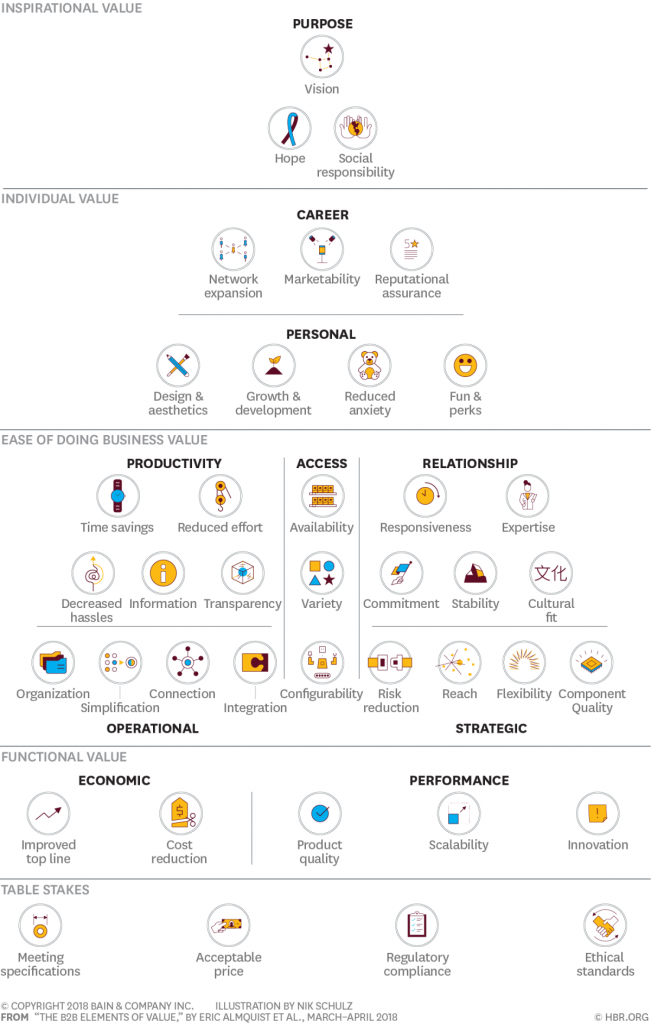I came across this article today, which discussed what experiential marketing is via an interview with the creator of the term. And as I read through, it got me thinking how this is very relevant for B2B marketing as well.
The article names experiential marketing as the content that goes beyond purchase and I strongly believe we get the best results when we build campaigns around services that not only generate good sales, but also delight customers.
So, let’s review the 3 pillars of experiential marketing and see how these apply to B2B companies.
1st Pillar: Happiness Touchpoints & Experiential Rewards
Whilst it is called business to business, businesses are entities who don’t exist in real life. In reality, you have someone (or a group of people) discussing and negotiating terms of a contract. We tend to think business executives take objective decisions when investing their companies’ budgets, but that’s not always the case.
Harvard Business Review has cited that “with some purchases, considerations such as whether a product can enhance the buyer’s reputation or reduce anxiety play a large role” (source). Which is why B2B marketers need to focus on happiness touchpoints and rewards as well. Here are a few examples:
Feel Good: On site visits, inviting your customers and leads out for lunch, to a sports event or to a concert, organising retreats
Values-and-Meaning: Promoting your company values, such as care for the environment, promoting diversity, supporting innovation or NGO causes
Engagement: Getting your prospects to test out your services (maybe offer them a freemium), see how it works for other clients or organise a meeting with your employees in an informal environment
2nd Pillar: Integration Via Seamless Omnichannel
The article explains this as involving all major channels your business uses to stay in touch with customers, online and offline, in their everyday life. CRM systems have helped B2B marketers gain a better understanding of the marketing channels a specific lead engages with, including offline channels, since CRMs also log meeting and call outcomes.
Based on each lead stage, you can develop strategies that are integrated in your overall marketing plan and tone of brand. For example, you can use participation in industry events to run a contest and gather new leads. You can also set up meetings with your existing customers and bring goodies to surprise them.
3rd Pillar: Staying Relevant by Personalising Your Campaign
Personalisation isn’t new to any B2B marketer and with the amount of technology we have at our disposal, it’s easier than ever to segment and target. Which is also why customers expect this from your brand.
To begin with, create marketing personas for your audience (if you’re not sure where to start, here’s a guide for it). Then, based on these unique sets of attributes, you will understand what experiences your segments are more likely to engage with and appreciate.
Work out their most pressing needs and how you can help them overcome them. Better than telling them, show them – invite them to your offices for a site visit, set up a mock account for them, present similar case studies or testimonials that are relevant, get them engaged. Remember that old saying, people will forget what you told them, what you showed them, but they won’t forget how you made them feel.
How much does experiential marketing cost?
The last part of the article addressed the cost issue. Going back to the HBR report I mentioned earlier, it turns out customers are more likely to become loyal if companies perform well in subjective indicators (such as strategic, operational, individual and inspirational values – see the pyramid below).
This decreases acquisition costs for new clients, whilst also increasing customer lifetime value, so it’s offers more ROI for your budget, which is a better indicator than budget spend. You can start small, with a lower budget for experiential marketing and look at YoY comparison of costs per lead and customer retention to track results. Decide what sort of activities you invest in by tracking competitor or top performers in your industry and by testing until you get the mix right.
Whatever you do, let’s aim to go below purchase – that’s where true value lies for everyone, marketers, our companies and their customers.
Value pyramid in B2B decision making (source)


